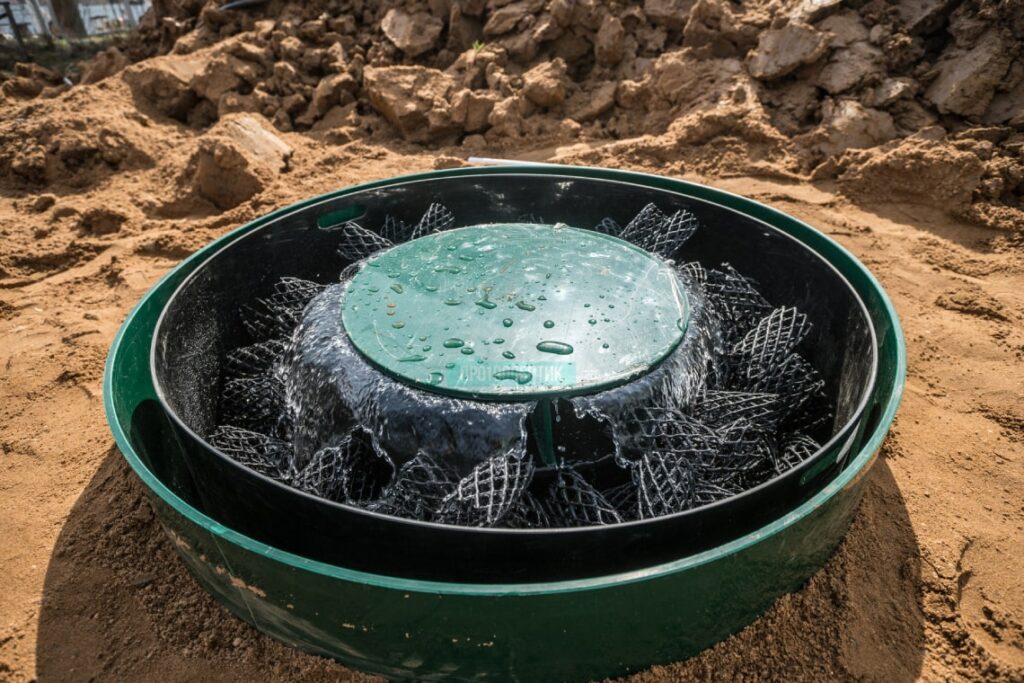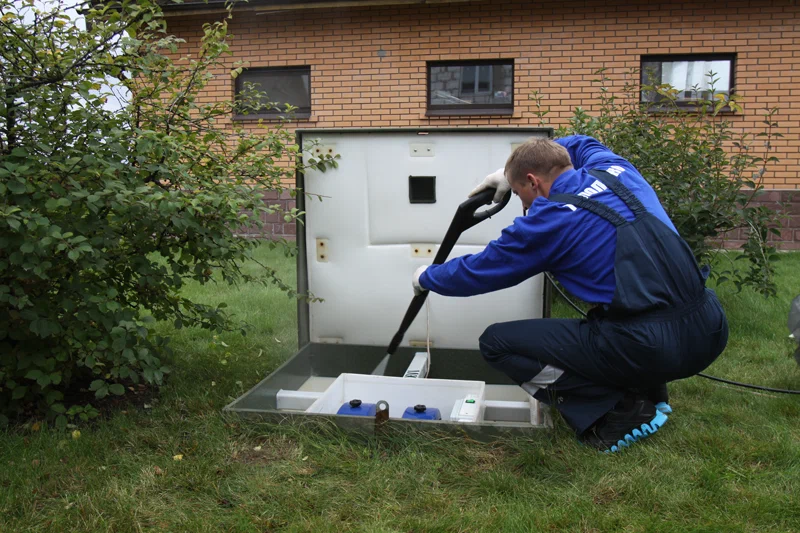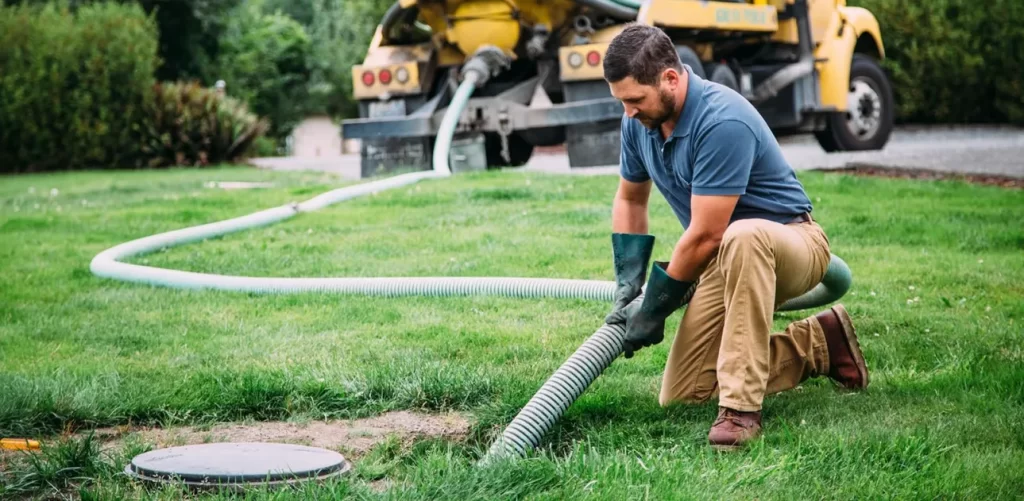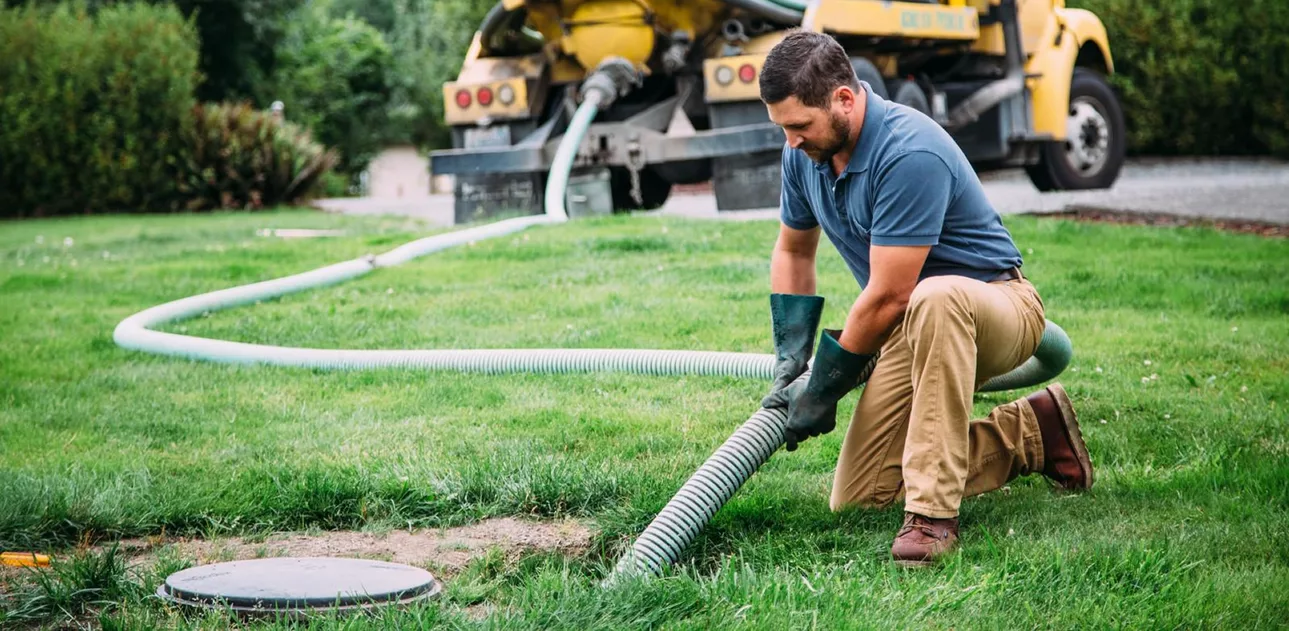The primary task of homeowners who have chosen an autonomous sewerage system is timely maintenance and elimination of accumulated during operation in the local treatment tanks of pollution. Sludge deposits appear as a result of the impact of beneficial microorganisms on the effluent. Over time, they accumulate, overflowing the chambers and clogging the overflow connections. If the septic tank is not cleaned, an accident will occur.
Contamination leads to the cessation of circulation of effluent inside the septic tank and complete amortization of the system. Silting of the tank occurs, causing unprocessed sewage to seep into the ground. As a result, the site becomes contaminated with sewage that destroys all life in its path. Foci of contamination are formed, through which diseases and infections spread, posing a danger to the occupants of the mansion.
Causes of siltation
In any modern local treatment plant, silt accumulates over time. This substance is formed under the influence of aerobic/anaerobic bacteria inhabiting the respective compartments of the tanks. This phenomenon can also be detected visually. The level of sludge deposits on the bottom surface of the septic tank increases. They gradually thicken, preventing the normal circulation of water masses between the chambers. As a result, the sludge blocks all the arteries, stopping the filtration process. And the accumulated liquid begins to pour outward, polluting the surrounding nature.

Such a local catastrophe requires an immediate response from the owner. The slightest delay will lead to extremely undesirable consequences, which will have to be fought for more than one month. Soil poisoned by feces and chemicals cannot be used for gardening or horticulture. You will have to wait for months until the feces burn out and become harmless to annual or perennial crops. The country mansion will be uninhabitable all this time. Unpleasant odors and infections dangerous to human life will appear. There are several main causes of such accidents:
- Installation of an unsuitable model of VOC;
- Violation of installation rules;
- Prolonged downtime of the local treatment system;
- Extinction of bacteria;
- A sharp increase in the volume of wastewater;
- Increase in the level of groundwater aquifers;
- Freezing.
With each of the above phenomena must be fought competently, without the slightest delay. If the homeowner does not pay attention to these problems, the irreparable can happen. In addition to fighting the consequences of an environmental disaster, he will have to repair the LOS or buy new equipment, which is associated with huge monetary costs. After the accident, the cleaning of the septic tank is no longer of any importance.
Mistakes when choosing a model
There are people who buy factory septic installations blindly. They do not pay attention to the technical and operational characteristics of specific modifications. For example, they do not take into account the number of users for which a particular product is designed. If there are 8 people living in the house, they buy tanks designed to serve 5 persons. As a result, during operation there is an overflow of the tank with further spouting of untreated feces into the ground. Consequently, choosing this equipment, it is necessary to pay attention to the following parameters:
- number of users;
- tank volume;
- volley discharge;
- accessories;
- material of manufacture;
- durability values.
It is also necessary to make sure of the seller’s integrity, who must provide the relevant certification and warranty documentation. Do not buy these expensive products in shops or markets. You may be slipped a fake or defective product that can not withstand even the slightest criticism. It will be money thrown away.
Incorrect installation
There are sanitary and epidemiological norms that are mandatory when placing an autonomous sewage system on the site. According to such norms, the station should be sufficiently distant from:
- Residential buildings;
- Household buildings;
- Neighbor’s fence;
- Well / well;
- Trees.
In addition, the tank should be installed at the required depth specified by the manufacturer in the passport. Pipe joints should be airtight so that there is no seepage of sewage. When laying the pipeline, it is necessary to observe the appropriate slope to ensure the normal movement of water masses. Otherwise, the sewage will stagnate and the system will stop working. Given the above, it will be better if the owner uses the services of professionals. Only experienced professionals understand the intricacies of installation and know the standards of current SNiP or SanPin.
Professional installation is the key to the long-term operation of expensive deep bio purification plants. By involving specialized engineers in this process, you protect your investment in such equipment. Properly performed work will save you from regular repair calls and additional costs. The local wastewater treatment system will function smoothly throughout its operational life. You will only need a rare cleaning of the septic tank, which can be done independently, without the need to hire a sewage collector.

Prolonged idling
Factory local treatment plants can be operated permanently or periodically. But if the homeowner is going to leave for a long time, it is necessary to conduct conservation of the equipment. Otherwise, with the onset of cold weather, useful microorganisms will be exterminated. Frost is the worst enemy of such bacteria. Eventually the process of biomass processing will stop, and the liquid will overflow the container and overflow outside. Therefore, it is unacceptable to leave the installations without preservation for the winter.
Rules of use
High-tech modifications of aeration-type LOS are characterized by a special sensitivity to pollutants of different types. Especially dangerous for such systems are detergents with a high concentration of chlorine. This chemical substance in large quantities instantly exterminates colonies of aerobes, which take months to recover. During this entire period, the toilet and bathtub for cottage residents will be inaccessible. More must not be dumped or poured into the plumbing fixtures:
- Construction debris;
- Petroleum products;
- Diapers;
- Tampons;
- Non-degradable items;
- Human hair;
- Animal hair.
All of the above components cause contamination of the tank and clogging of the arteries. If this happens, sludge will accumulate very quickly and spouting will be inevitable. Consequently, each user should carefully monitor the rules of operation and adhere to them. This will not only save the owner from emergencies, but will help to extend the life of expensive equipment.
Maintenance
One of the main advantages of modern VOCs is considered to be full autonomy of operation. This means that a person practically does not interfere in the work of the system, only occasionally monitoring its condition. And cleaning the septic tank from sludge or deposits on the internal surfaces is carried out very rarely, no more than twice a year. About failures in the work of communication signal stinky vapors that suddenly appeared on the site. In this case, the owner should look into the inspection hatch. If he sees that the level of sludge deposits is increased, it is necessary to perform pumping.

How to perform pumping of spent biomass?
Cleaning of a modern type of septic tank does not require the involvement of collectors with special equipment. The equipment of such models includes special pumps that perfectly pump out the accumulated impurities in the tank. Thanks to such devices, any person can cope with such a task without calling specialists. You just need to turn on the pump and wait for it to pump out the accumulated biomass.
Removal of residual products of aerobic action will ensure the normal movement of liquid between the chambers. The overflow connections will not become silted up and the effluent will be able to move freely. Thereby accelerating the process of their filtration and the operation of all equipment. Thanks to timely maintenance of autonomous sewerage, you can extend the service time and prevent undesirable phenomena.
Mechanical cleaning of the septic tank
The mechanical method of cleaning implies a physical impact on pollutants. If the layer of impurities is too dense, you can use an ordinary pole to soften the compacted layers. After splitting the substances, you should turn on the pumping unit and pump out the sludge deposits. In this way, you will be able to remove all contaminants without the need for intervention of specialists.
Chemical means
Contaminants are of different types, depending on what we pour into the sewer system. Over time, fatty deposits appear on the inner surfaces of the tanks, which can not be removed mechanically. If users pour petroleum products and technical oils into toilets or sinks, only chemical preparations can help. Most often for such contaminants are used:
- Formalin;
- Chloric lime;
- Ammonium salt;
- Nitrate oxidizers.
Formalin is considered an effective disinfectant. This chemical is otherwise known as liquid formaldehyde. However, it destroys beneficial microorganisms, so it is used less frequently. In addition, formalin is very dangerous for people. It is a poison that causes poisoning with all the undesirable consequences.
Specialists advise against the use of bleach. Despite its disinfectant properties, it has toxicity. If the owner still decides to use bleach, you will have to wear gloves and a respirator. This is a very toxic substance that causes irritation of the mucous membranes of the eyes and respiratory tract. And for aerobes, chlorine is considered the worst enemy.
Ammonium salt has unique properties and quickly dissolves any organics. In parallel, it eliminates unpleasant odors. But it should be noted the special toxicity of this drug. For this reason, it should be used away from living quarters. Otherwise, the inhabitants of the cottage can be poisoned. No less dangerous ammonium salt is for colonies of beneficial bacteria.
More gentle preparations in comparison with the above options are considered nitrate oxidizers. Otherwise they are called nitrogen fertilizers. They are used to break down organic pollutants. Nitrogen quickly eliminates stinky fumes and does not pose a danger to the environment or human health. But will cost such a cleaner much more expensive than other chemical preparations. The minus of nitrate oxidizers is the formation of salts in contact with metal elements of local treatment plants. Regular cleaning of the septic tank with such preparations can disable the entire electrical system.
Biopreparations
The most safe, practical and effective are considered biological cleaners that do not pose a danger to the electrics. They significantly reduce the volume of biomass, while eliminating stinky vapors. It should be emphasized that after their action, sludge deposits are transformed into a substance suitable for soil fertilization. This substance does not contain chemicals or harmful infections. Two types of such preparations are distinguished:
- Aerobic;
- Anaerobic.
The first are populated in a special chamber of the septic tank – aerotank with pre-installed compressors and aerators. The latter are needed for forced air injection and aeration of biomass. After all, these bacteria cannot survive without oxygen, unlike anaerobes, which can only multiply in an oxygen-free environment. Anaerobes are placed in an airtight chamber to protect them from oxygen. The seepage of air exterminates them instantly.
Biopurification is referred to as a bacterial-enzymatic method that does not harm the system. Consequently, this method is considered the safest and best if septic tank cleaning is needed. Bacteria do not harm the electrical appliances included in the standard equipment of the LOS and prolong the service life. They release special enzymes that trigger the oxidation of sludge. As a result, fermentation begins and pollutants are broken down into small particles. All that remains is to pump them out and place them in a compost pit. After distillation, such residues can be used in the farm for fertilizing plants.
Conclusion
If the local sewage network works with interruptions, it is necessary to understand the causes. It is difficult to do this independently, so it is better to attract specialists. In the case of siltation of the tank, it is necessary to urgently perform cleaning measures with the use of a built-in pumping unit. But beforehand, it is recommended to soften dense contaminants by applying the above-described preparations.
